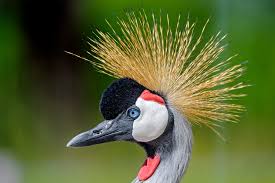Rwandan conservationist helps to save hundreds of cranes
A tall grey crowned crane with an injured leg struts through a bird sanctuary in the Rwandan capital Kigali. The Umusambi Village has rescued more than 200 cranes from captivity over the years, helping to boost the population of the endangered birds to 881 from 487 just four years ago. Before the intervention, local communities were hunting or capturing the birds to sell, said veterinarian Olivier Nsengimana, whose conservation organisation runs Umusambi Village together with the government.

- Country:
- Kenya
A tall grey crowned crane with injured leg struts through a bird sanctuary in the Rwandan capital Kigali. The Umusambi Village has rescued more than 200 cranes from captivity over the years, helping to boost the population of the endangered birds to 881 from 487 just four years ago.
Before the intervention, local communities were hunting or capturing the birds to sell, said veterinarian Olivier Nsengimana, whose conservation organization runs Umusambi Village together with the government. The name means grey crowned bird in the Kinyarwanda language. These cranes, which sport a yellow crown of feather tipped with a black and red throat pouch, have often been seen as a status and wealth symbol in Rwanda. They are often found in private homes or hotels, where they are kept as pets.
"There was a huge demand for the pet trade," Nsengimana said. His passion for cranes goes back to his childhood, growing up in a village filled with grey-crowned cranes that served as alarm clocks and provided entertainment.
"People really enjoyed their dance, their call, it's just one species that means a lot in the society, in the culture," he said. Some of the rescued birds in Umusambi Village end up there after being injured by poachers. Others were kept in homes after their legs had been broken or wings were clipped by their captors to prevent them from flying away.
Once the birds are healthy enough to survive in their natural habitat, Nsengimana takes them to a protected forest.
(This story has not been edited by Devdiscourse staff and is auto-generated from a syndicated feed.)










